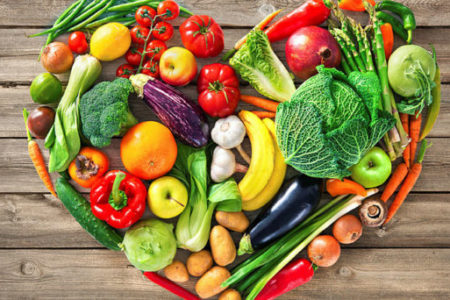What to eat: That’s always the question
As Hippocrates said, food is your best medicine–or in the modern day version, you are what you eat But, with a busy lifestyle that most of us have these days, I was asked to write an article on how do we cook and feed ourselves healthily? Let’s review the key components of a healthy meal.
1. There should be approximately the equivalent amount of protein to carbohydrate. Proteins can be eggs, fish, chicken, turkey, beans, legumes, tofu, tempeh, nuts, seeds, lamb, buffalo or wild meat. Carbohydrates should be primarily vegetables, then whole grains and fruit. This will keep the blood sugar stable, therefore the cortisol levels low.
2. The amount of alkalinizing foods should be slightly more than the acidifying foods. By eating a balance of acidifying and alkalinizing foods, your body will be able to detoxify much more efficiently. This means you will release metabolites, toxins, hormones, drugs and breakdown products like lactic acid much more quickly from your body. Generally, alkalinizing foods are most whole grains, seeds, fruits and vegetables. The exception is tomatoes, lemons/limes, oranges and grapefruit. There is still the misinformation based on studies that were not done on humans, that lemons are alkalinizing. This is untrue. Lemons are generally acidifying for most people. Certain grains, like quinoa, beans and legumes are partially alkalinizing and partially acidifying, since they are partially protein and partially carbohydrate.
Acidifying foods are protein, therefore, eggs, chicken, turkey, fish, nuts, soy and wild meat.
3. Minimizing acidic foods and drinks, therefore, is important. You want to replace tomatoes and tomato sauce with peppers and make a red pepper sauce as much as possible. You can get large jars/cans of roasted red peppers from most Italian grocery stores. I blend all of the peppers in the jar at one time and freeze this in 2 cup amounts, since most recipes call for a can of stewed tomatoes and this is equivalent. There are some heritage varieties of tomatoes that are very low acidity, so, for those that like fresh tomatoes, try and grow or purchase those.
Citrus fruits can be replaced by any other fruit, the best being cherries, berries, plums or any other dark coloured fruit, since they are high in bioflavinoids that are so beneficial to our immune systems.
Anything white is also acidifying, so, cereal, bread, crackers, pasta and flour should always be whole grain and white potatoes should be replaced with the heritage varieties, like purple potatoes. Sugar should be replaced with honey, maple syrup, agave syrup or stevia.
Acidic drinks, such as coffee, decaffeinated coffee, black/green/white tea, herba mate, honeybush, rooibos tea, Pop and soda are all stimulants, therefore acidifying. These should be replaced with filtered water, herbal teas or other hot drinks such as Inka, Bambu or Teeccino. It is worth checking your water for pH to see if it is neutral, acidifying or alkalinizing. Most chlorine treated water and many bottled waters are acidic.
4. Anything from a cow or a pig should be minimized, since these cause inflammation in our bodies. So, pork or beef can be replaced by buffalo or lamb. Cow’s milk/cream can be replaced with almond/coconut/rice/oat/hemp/soy or goat milk. Most people tolerate yogurt, since the bacteria have broken down the protein, so, sour cream can be replaced with yogurt. All cheeses and cream cheese can be replaced by sheep or goat cheeses/soft cheeses. The sheep cheeses tend to be milder. Ice cream can be replaced by coconut milk ice cream, Rice Dream ice cream, goat milk ice cream, Soy Delicious or frozen yogurt.
5. The amount of food should be based on how much activity you do in a day. If you want to maintain your weight, the amount you eat should be the same as what you burn up in a day. If you wish to lose weight, you either have to increase your activity level to burn more calories than ingested, or, decrease the amount of calories you take in. You can calculate a typical day of calorie output by accessing a computer program that has you input the level and length of time of activities during the day and it will give you an approximate amount of calories burnt.
6. A variety of colours, tastes and textures help stimulate all the different senses, making the meal more satisfying. Try having a combination of bitter, sour, spicy and sweet foods to satisfy all the taste buds!
7. Meals should be eaten in a relaxed environment and ideally with others. You should NEVER eat with the television on, never mind it front of it, since the brain will focus on that instead of enjoying and digesting your meal. By eating with others, it tends to slow down eating, and hopefully creates a positive atmosphere. Both of these create much better satiation, thus feeling satisfied with less.
The next article will give you some examples of meals that incorporate all these points.
Brenda Gill is a naturopath practising in Rossland, BC.


























